It was the end of 2016, and Santana Gutierrez was walking through Fashion Valley Mall, the famous and largest outdoor shopping center in San Diego. On the path to the Apple Store, the 17-year-old girl had to constantly dodge oncoming pedestrians.
But that didn’t stop a teenage girl from occasionally glancing to the side. Santana wanted to catch a glimpse of her reflection in the glass mirrors of the shops. Today she wore blue shorts, a burgundy scoop-neck T-shirt, and carried a black canvas backpack.
Santana saw her confident shadow strutting along, even though it only flickered behind the backs of countless passing shoppers. But suddenly, there was a moment that startled the girl.
The shadow unexpectedly moved closer to Santana. It changed outfits, transforming into a girl wearing a red polo shirt, ankle-length jeans, and an ID badge around her neck. Strangely, the shadow introduced herself as Isobel and said she worked for Save The Children, a charity organization.
She explained to Santana what the organization was doing, then asked if she was interested in contributing financially or with her time.
But Santana tuned out everything Isobel said. Her entire focus had been drawn tightly to the face of the person in front of her. Almost, Santana mistook Isobel for her shadow stepping out of the mirror.
In real life, they looked as alike as two peas in a pod.
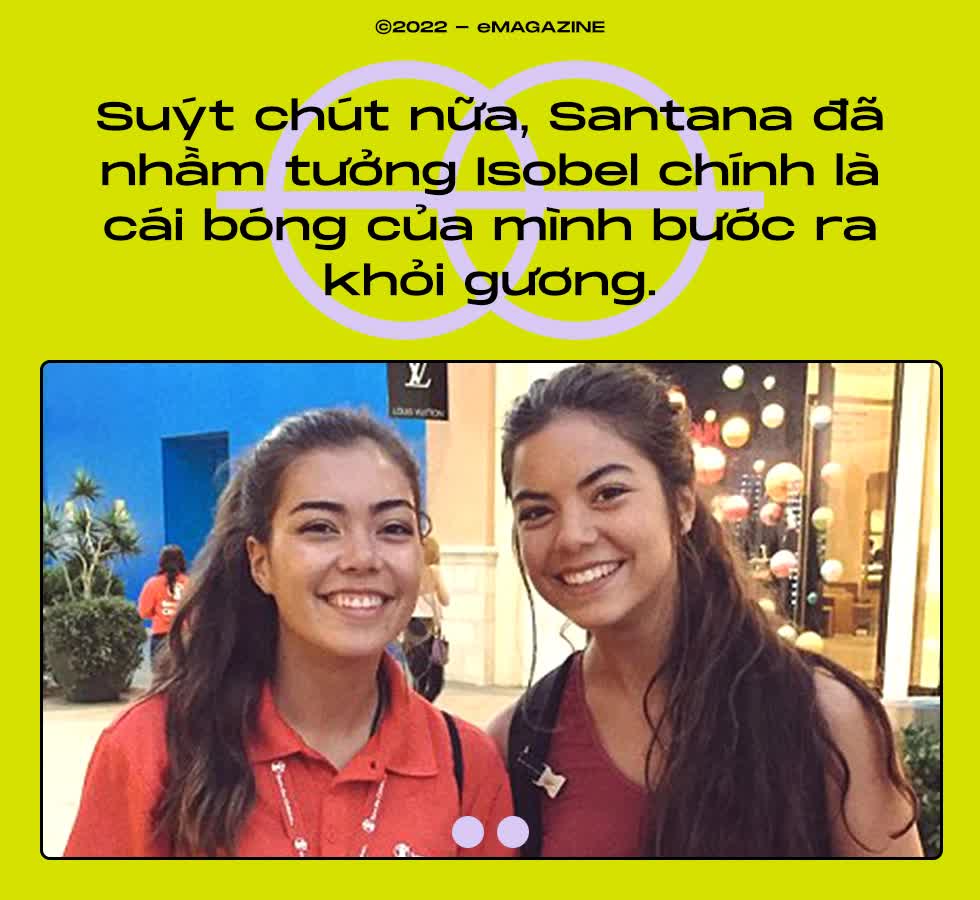
“All I could think at that moment was: Oh my God, this girl looks just like me,” Santana recalled. Isobel didn’t take long to realize the oddity either: “I was thinking the same thing as you.”
The two girls laughed, ran to the nearest mirror, and took a commemorative photo together. Santana later shared her photo on Twitter: “Hey everyone, I just met my long-lost twin sister.”
The story of the coincidence delighted everyone. “Your parents must have to explain this one,” a friend of Santana commented. But what the two girls didn’t expect was that their photo quickly went viral, spreading beyond their circle of friends.
After that evening, Santana’s tweet received over 1,000 shares. And the strangest part was just beginning.
Nearly 20,000 retweets helped the photo reach two more girls who also looked like Santana and Isobel. These new girls commented their photos under Santana’s tweet. The online community even found another girl who bore an uncanny resemblance to all four of them.
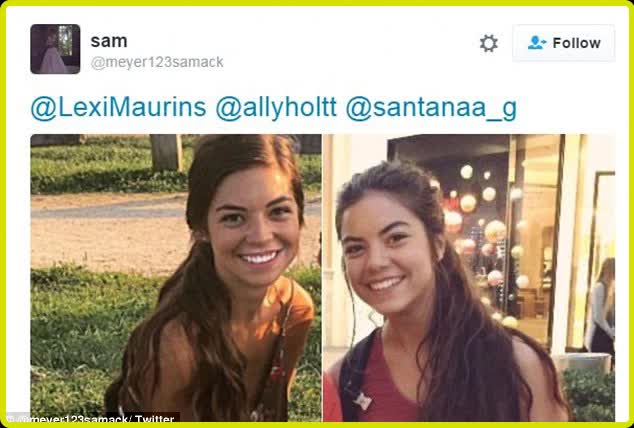

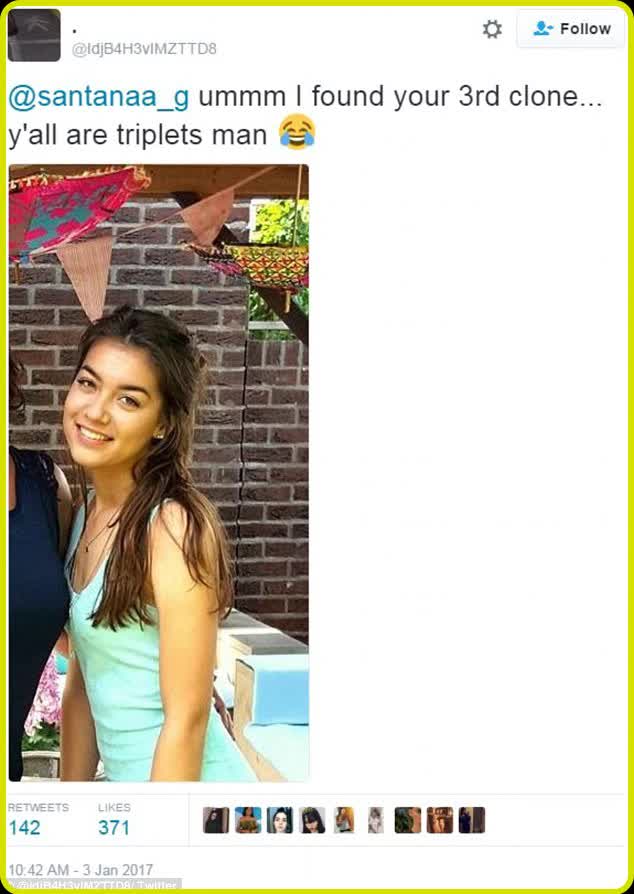
At this point, Santana was in shock. She showed the photos to her parents. But both her father and mother said it was just a coincidence. Santana did not have any identical twin sisters. The girls who looked alike were neither cousins nor half-siblings.
So if these girls were not stepping out of a multiverse, then there was only one remaining possibility. All five girls were doppelgängers of each other, a strange phenomenon also known as Doppelgängers.

Doppelgänger is a German-derived word, combining Doppel (double) and Gänger (walker). It means “people who exist, possessing identical appearances but having no familial or blood relations.”
According to the Merriam-Webster dictionary, the term was first used in 1796 by the writer Jean Paul. In his novel Siebenkäs, Paul describes a main character who exchanged identities with a friend who looked exactly like him.
Although the term Doppelgängers became widely used only after the 18th century, many legends about doppelgängers have existed for thousands of years. In ancient Egyptian civilization, they referred to people with identical appearances as “ka.” These individuals were considered omens as they were believed to be a soul inhabiting the same body.
For the Chinese, doppelgängers are referred to as “yingzi.” In the past, those who bore a resemblance to the emperor were brought to the palace. They were trained to impersonate the king as body doubles in case of emergencies or when the king’s life was in danger.
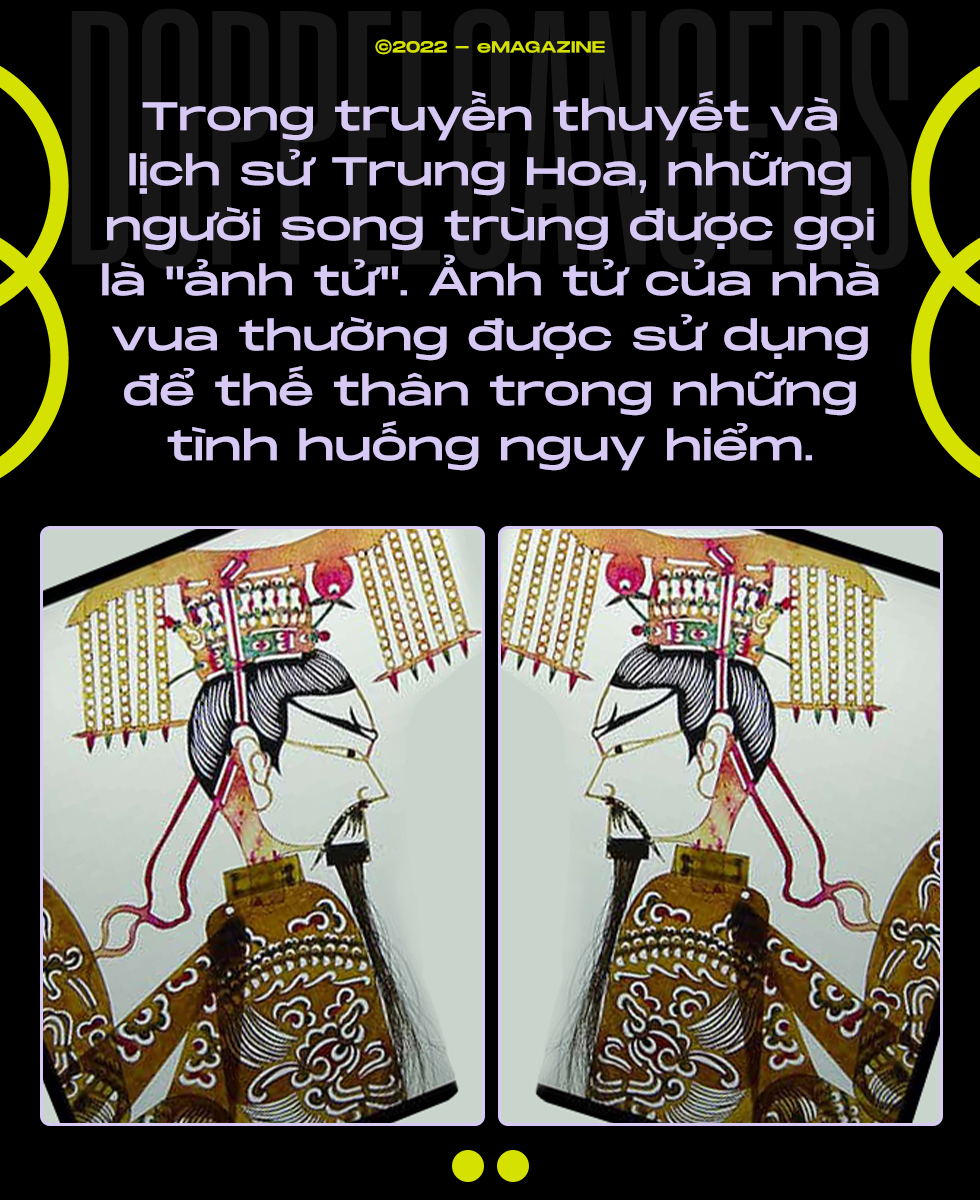
Norse legends have a term called “Vardøger” that also refers to doppelgängers. The tale suggests that Vardøger often takes a step ahead of a person. It arrives at a location the person intends to go, mimicking their appearance, voice, gestures, and even their scent.
Then, the original person arrives at that location, but witnesses there say they have already met him. They are unaware that it was merely a Vardøger impersonating them. Vardøger in Norwegian also means “the sound preceding, or the image of a person before they arrive.”
The Scots in the Orkney Islands have a tale about “trow,” a supernatural being that often gives birth to sickly children. Thus, when a human woman gives birth, the trow would sneak into their home, steal the healthy children, and replace them with their own.
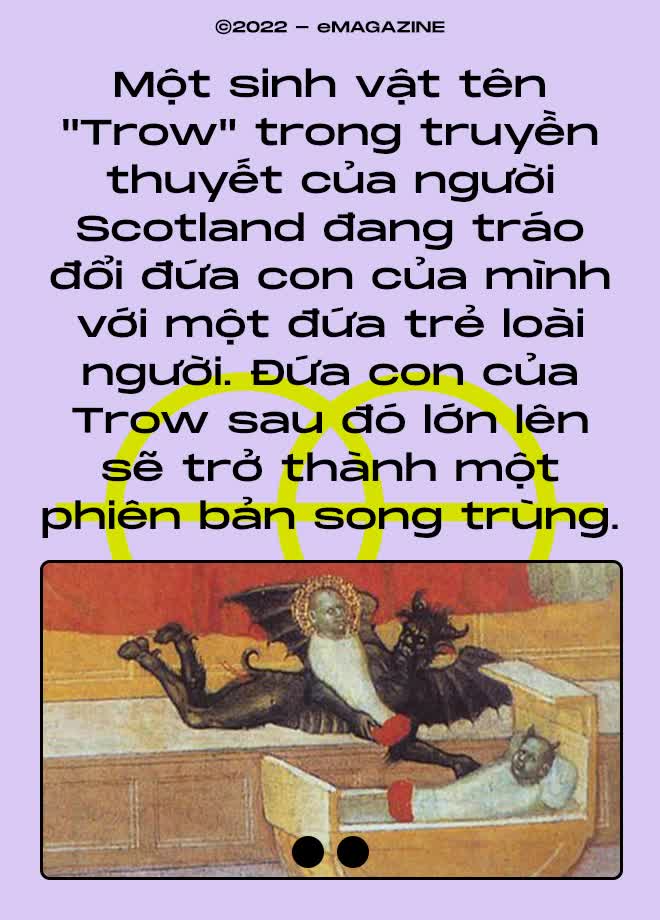
The “trow” would then grow up to become an exact replica of the stolen children. Therefore, when a woman in Orkney gives birth, they are often watched very closely.
Similarly, many indigenous American myths also mention the concept of doppelgängers. For instance, the Hopi legend refers to people with similar appearances, viewing them as the Children of the Sun and the Children of Water.
In folklore, they also believe in the duality between the earthly world and the underworld. The Hopi conceive that whatever happens on the surface will have the opposite effect in the underworld, and the existence of doppelgängers is no exception. Not only is it found in legends, but the idea of doppelgängers has also made its way into modern literature and cinema. Countless recent works have contributed to introducing the concept of Doppelgängers deep into the public consciousness.
For example, the 2019 film Us by director Jordan Peele tells the story of a group of protagonists being hunted by their exact Doppelgänger counterparts known as “the Tethering.”
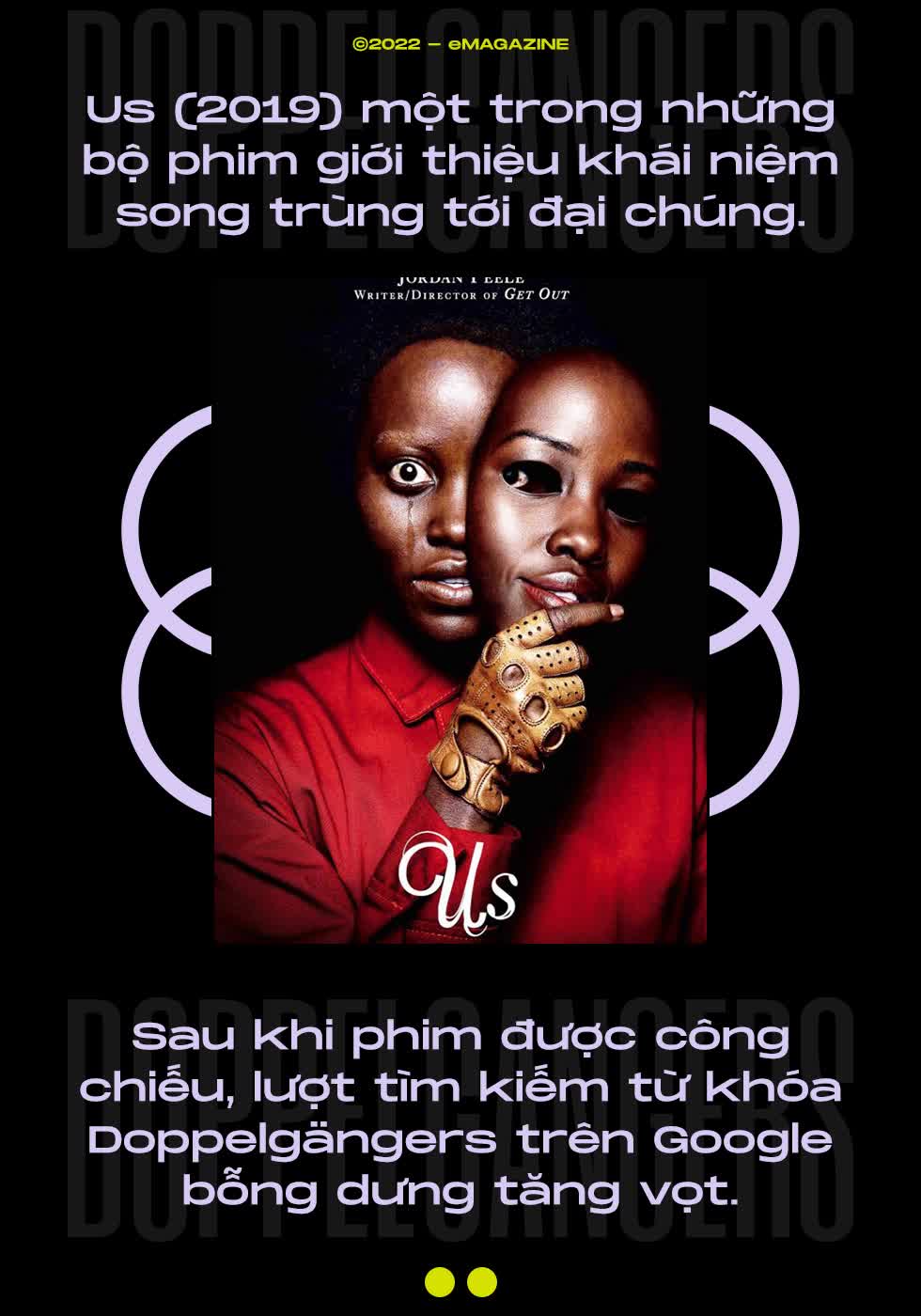
This idea is borrowed from an old Andersen tale, where when a person casts their shadow under a light, the shadow separates from the body and becomes a Doppelgänger.
Interestingly, the copy from the shadow possesses completely opposite moral qualities compared to the original version, and it could kill its original to continue to exist in its place.
In 2019, after the release of Us, searches for the keyword Doppelgängers on Google skyrocketed. Previous films that explored this phenomenon were also compared, such as Eneuve (2013) by director Denis Villeneuve, The Double (2013) by Richard Ayoade, and The Prestige (2006) by Christopher Nolan…
Literary works were also mentioned, including The Outside (2018) by Stephen King, where villains can use DNA codes to transform into a Doppelgänger of another through scientific techniques.
Ten years prior, Jewish-American writer Tana French also wrote The Likeness (2008), telling the story of a murder case where the victim and the detective were Doppelgängers of each other.
Going back another 10 years, we have Glamorama (1998) by Bret Easton Ellis, a satirical work on celebrity culture and consumerism. The protagonist, Victor Ward, is an A-list actor and model but has been replaced by his Doppelgänger.
Interestingly, the entire Glamorama is told from Victor’s first-person perspective. Yet in some chapters, the plot is so strange that readers still wonder whether it is being narrated from the perspective of the Doppelgänger or not?

It should be noted that it is no coincidence that a phenomenon as supernatural as doppelgängers could emerge from legends and deeply root itself in popular culture. This can only result from a reality that the world we live in today also hosts pairs of doppelgängers with inexplicable identical appearances.
And the easiest place to find them is on social media platforms, where people are posting billions of photos and videos featuring their own faces every day.
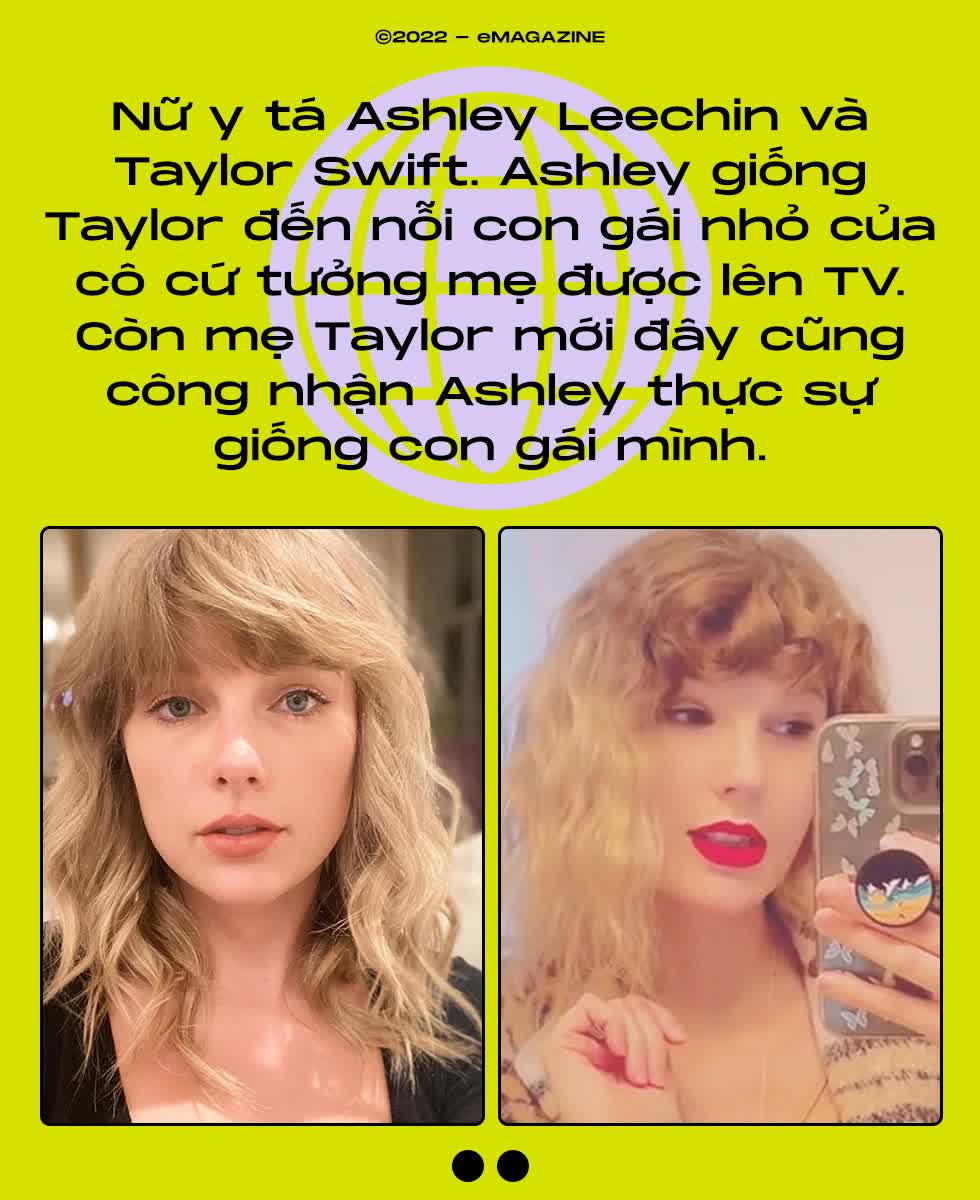
In 2021, Swifties – the fan community of Taylor Swift was excited to share a TikTok video showing the singer doing laundry in a traditional way.
In the video, Taylor was shaking out her clothes in a bathtub with a bottle of Tide detergent beside her. Many later assumed that the singer never used a washing machine. However, what they didn’t expect was that the character in the video was not Taylor.
In fact, the TikTok account posting the video belonged to Ashley Leechin, a nurse from Utah. Leechin looked so much like Taylor Swift that her daughter once thought her mother was on TV. Many patients in the hospital were also surprised when they first saw her walk into their room.
Even Taylor Swift’s mother had to admit that Leechin looked too much like her daughter. Of course, she stated that they had no blood relation whatsoever. And Leechin was simply a Doppelgänger of Taylor.
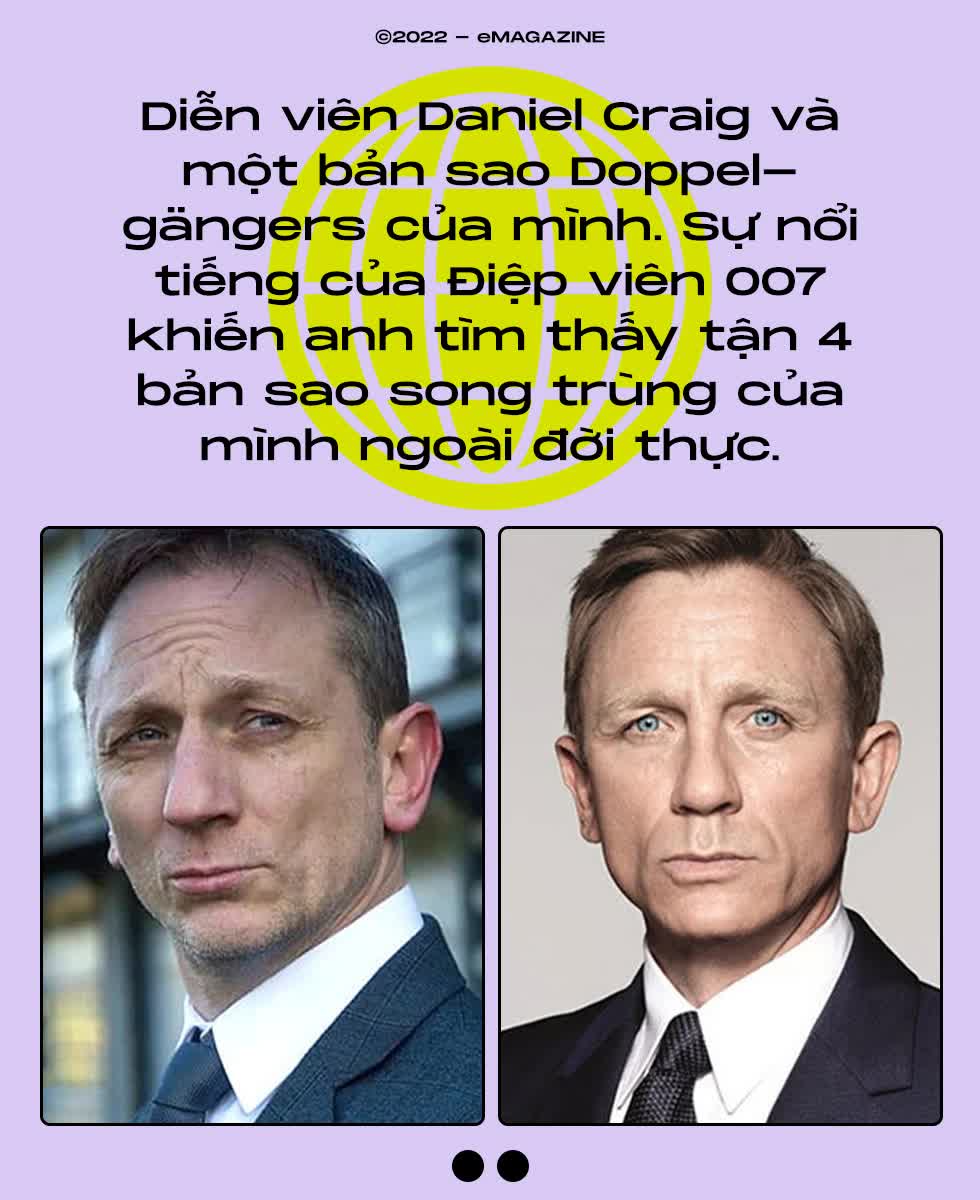
Similar to Taylor Swift, many famous stars have also found their doppelgängers thanks to the internet. There is even a long list of hundreds of names from Tom Cruise, Lady Gaga, Johnny Depp to Justin Timberlake, Daniel Craig, and Ariana Grande…
Actors, singers, football players, politicians, and famous hosts around the world are those who are most likely to find doppelgängers resembling them.
Whenever you search for the keyword “Doppelgängers” + a celebrity’s name, you have a chance to find a copy that looks remarkably like them, people who could cleverly build a stunt double career on Instagram or TikTok.
Let’s look at some examples:

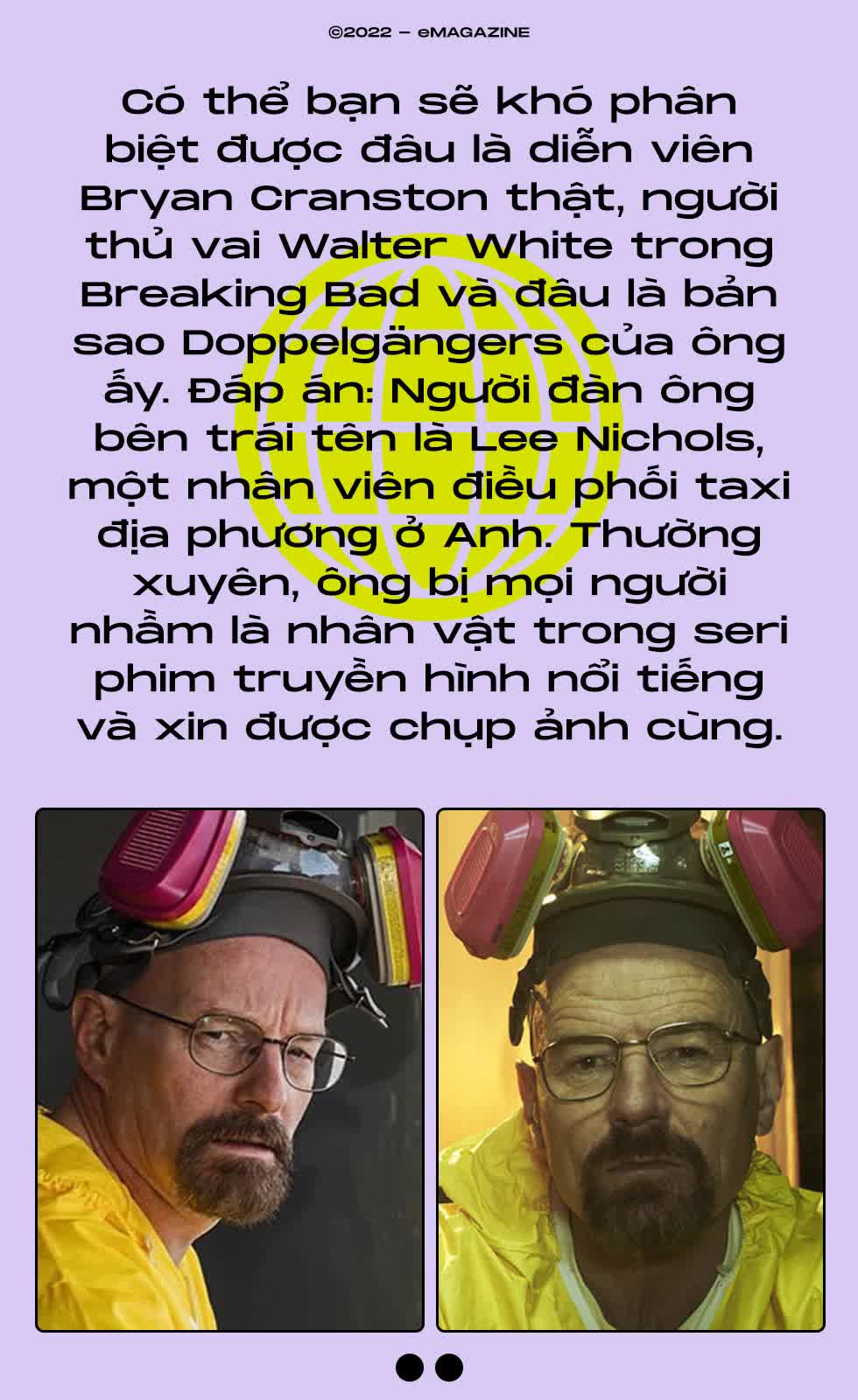
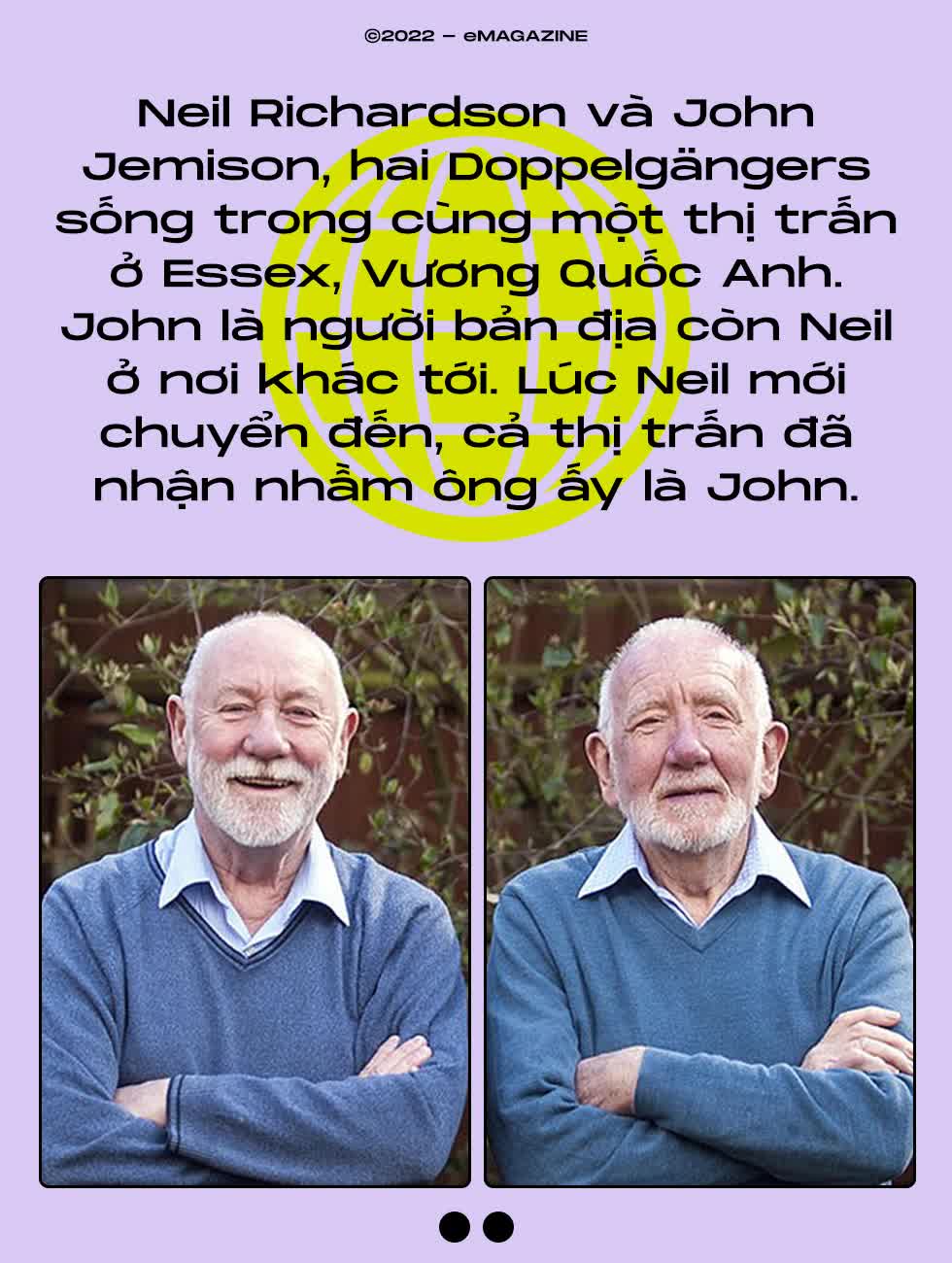
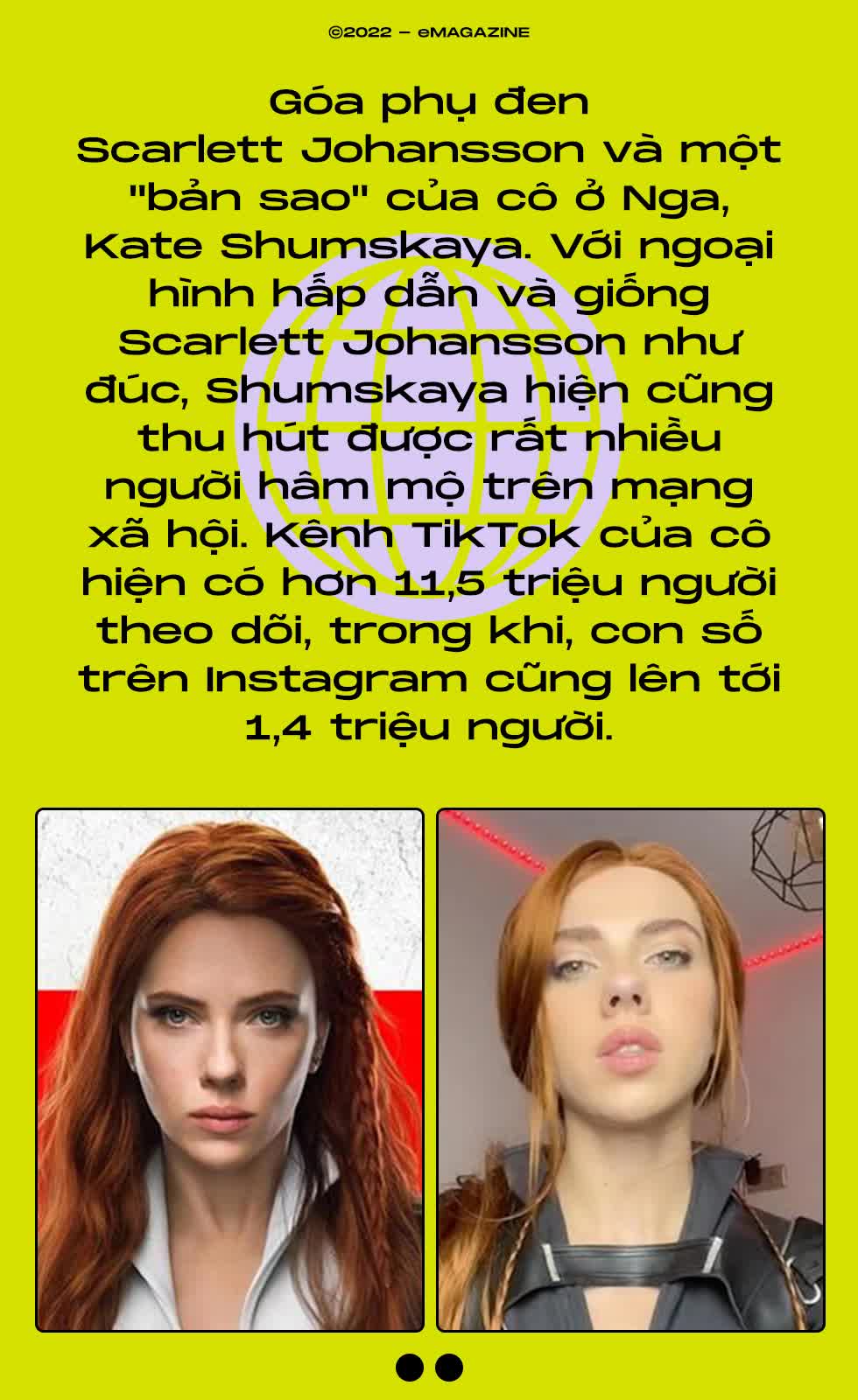
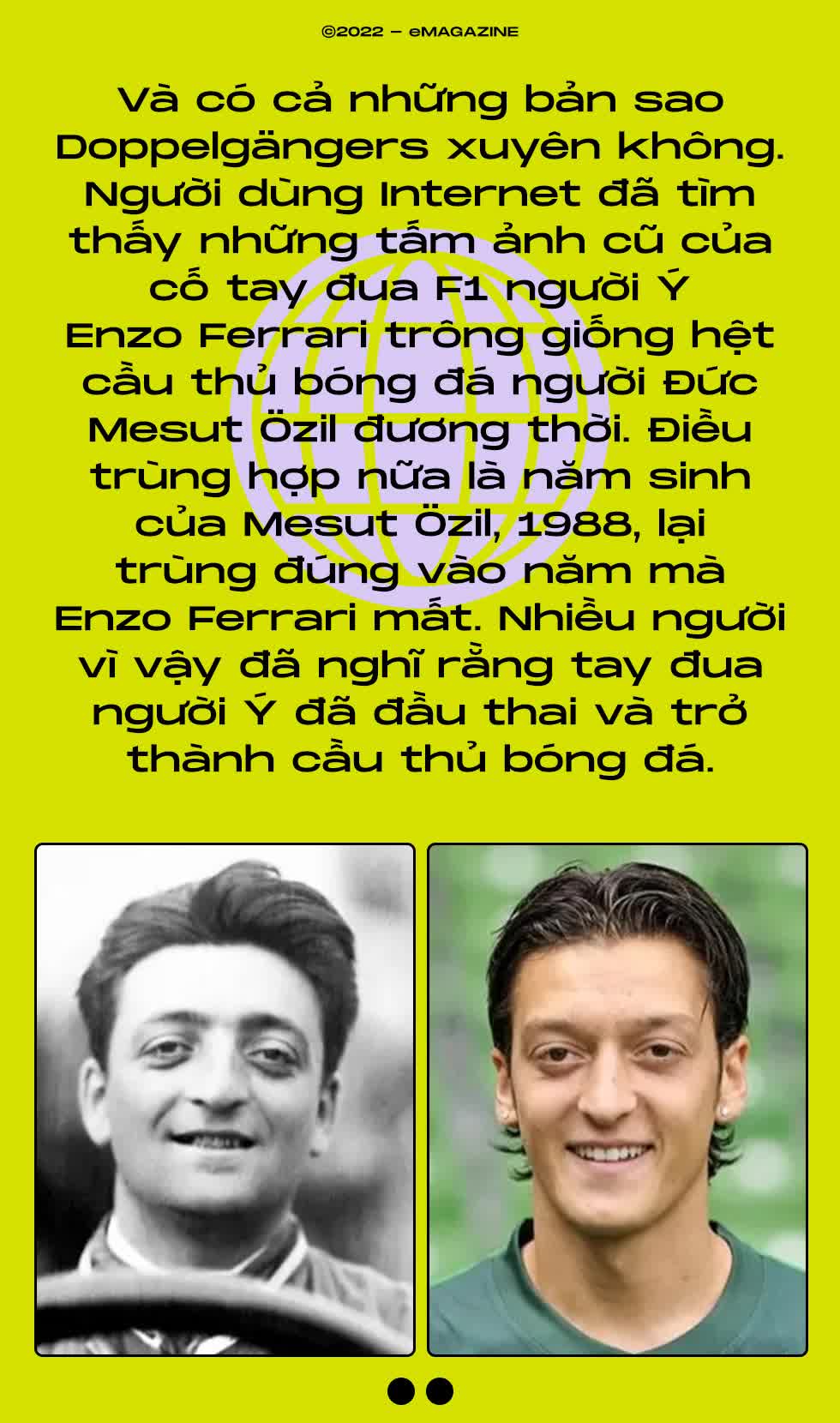
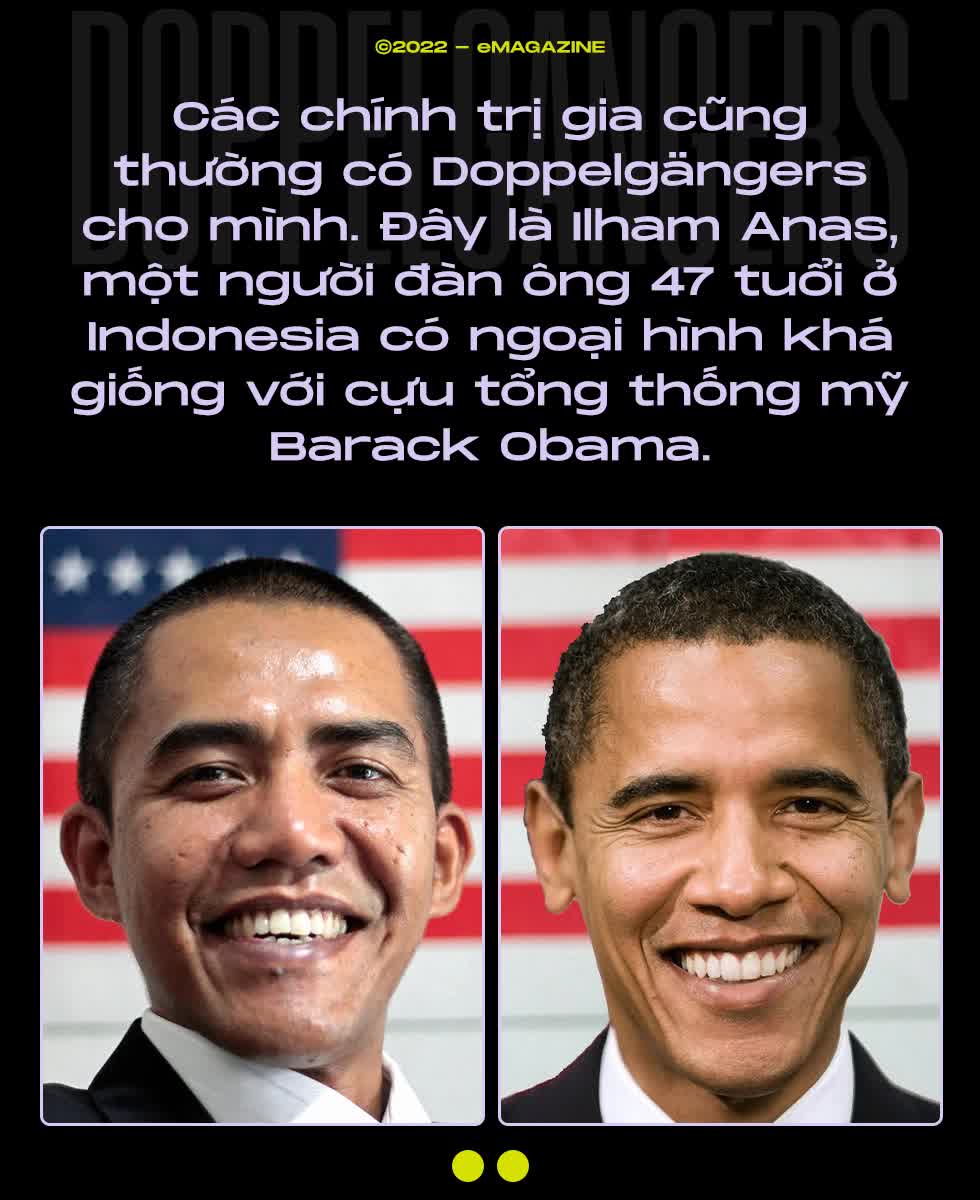
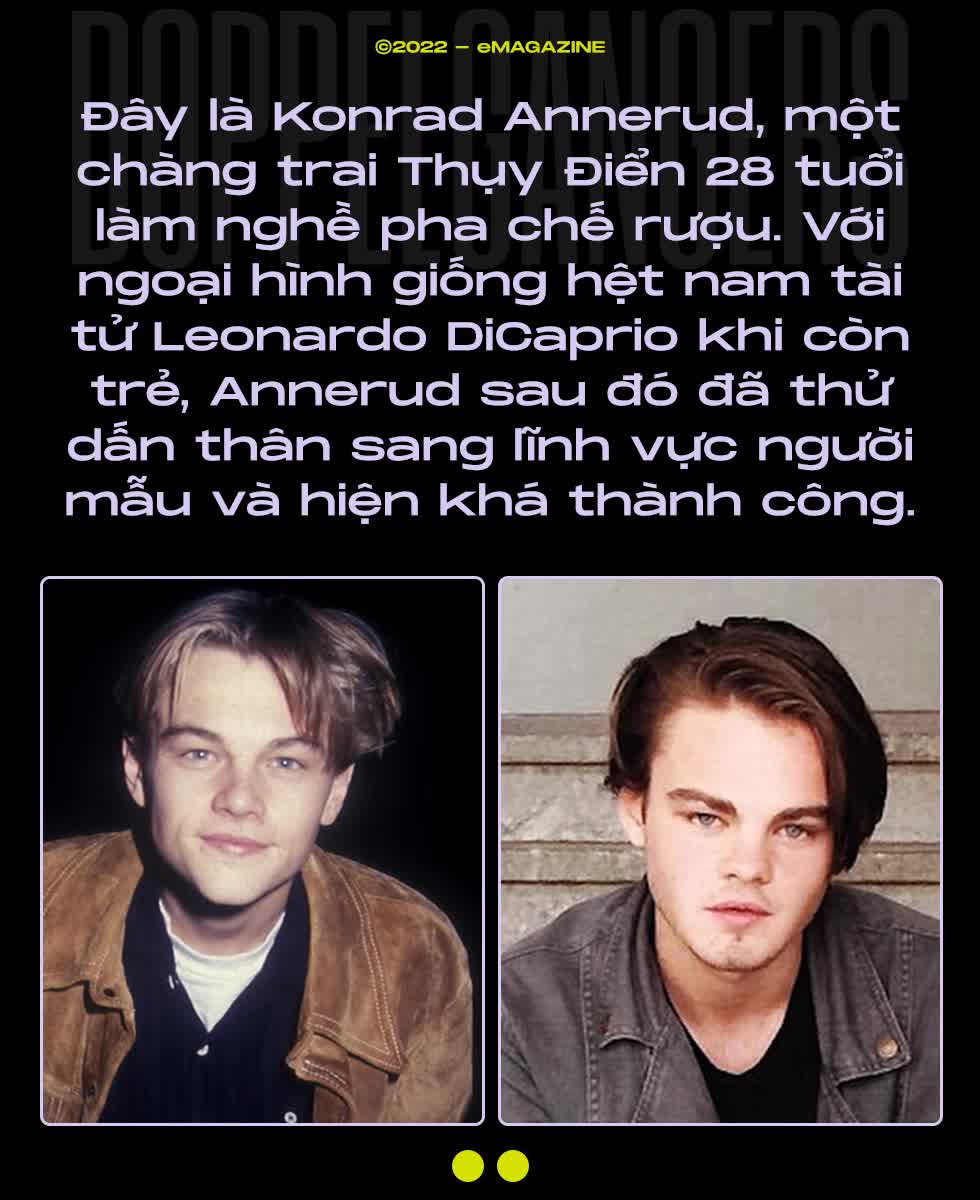
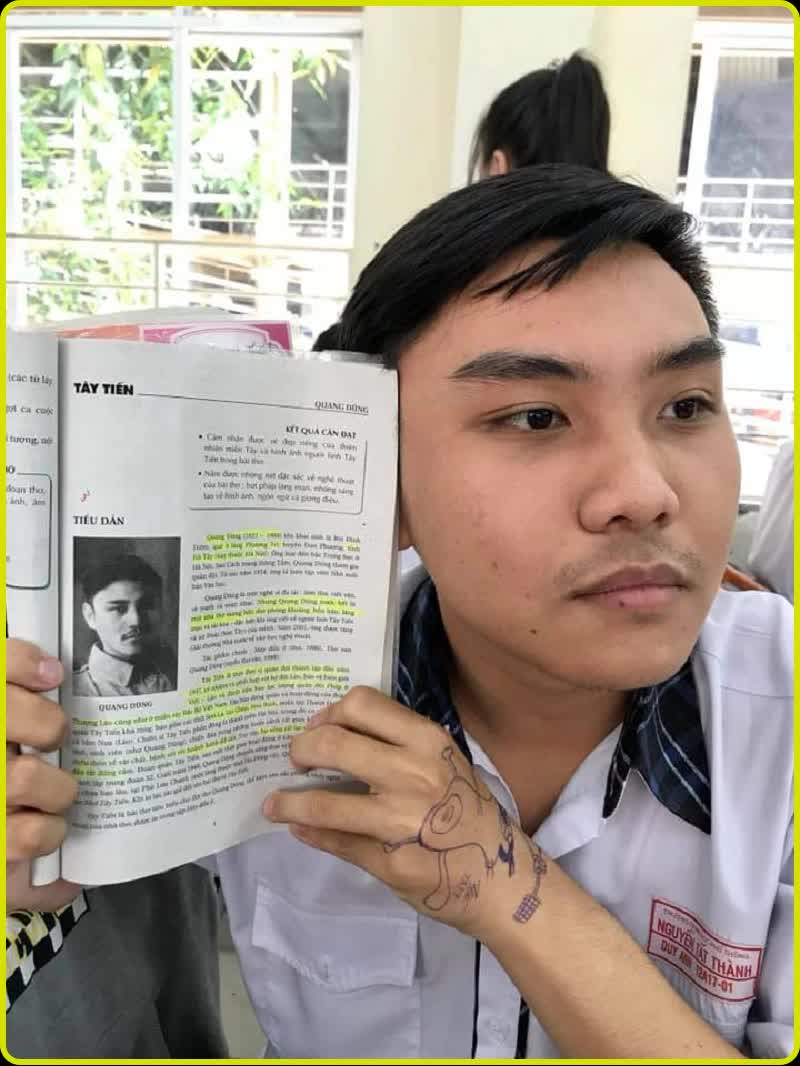
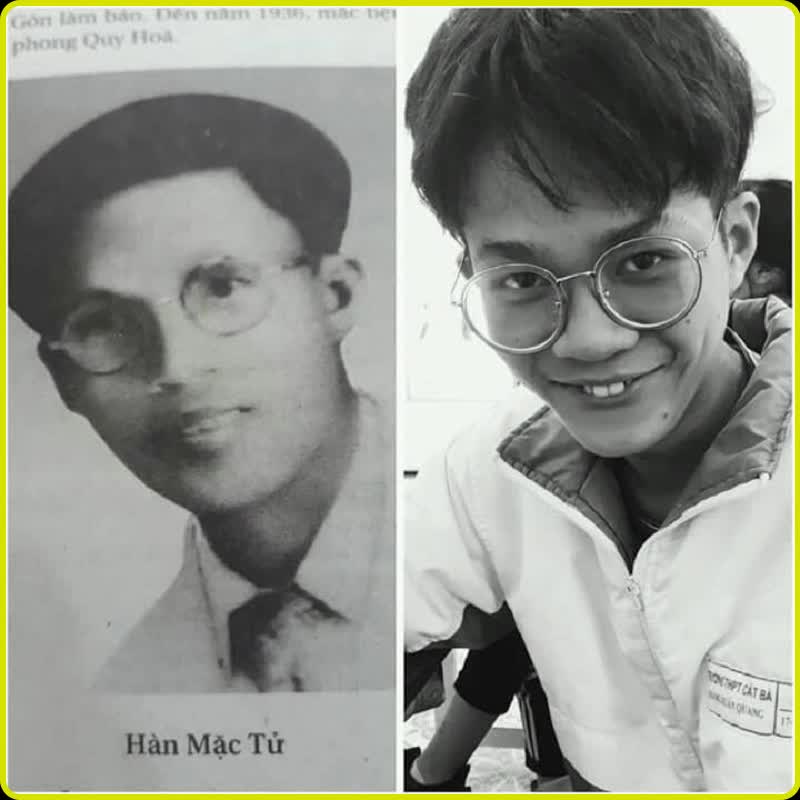
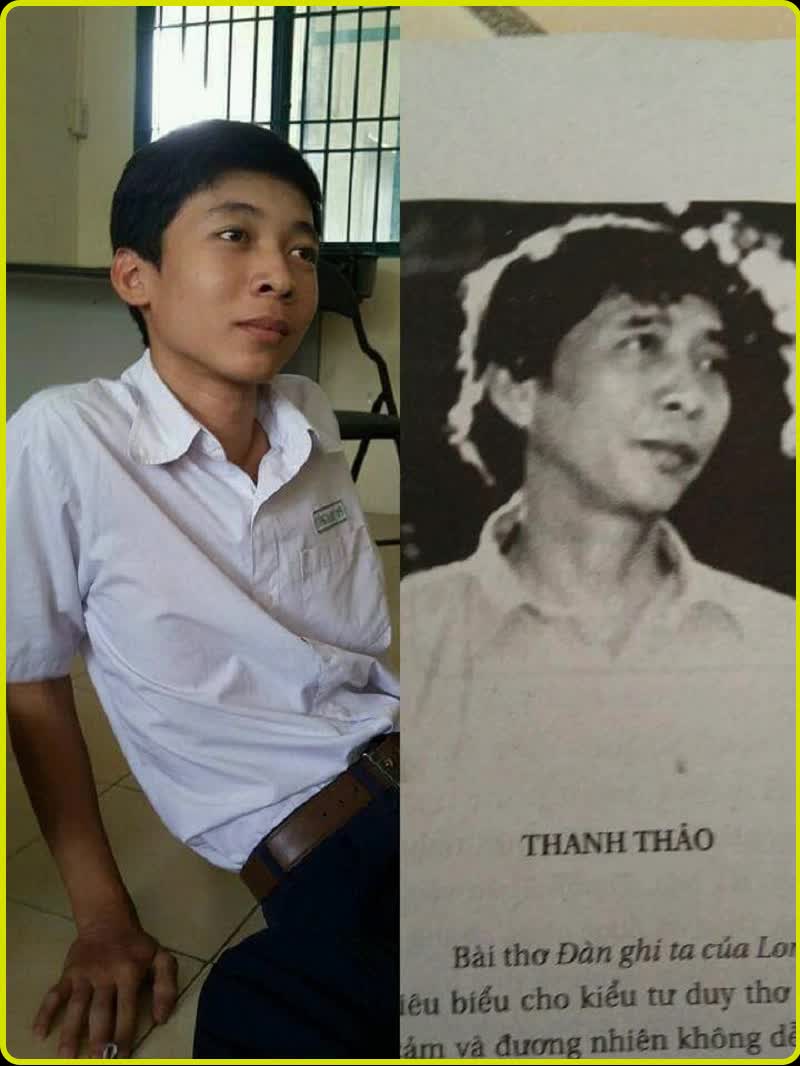
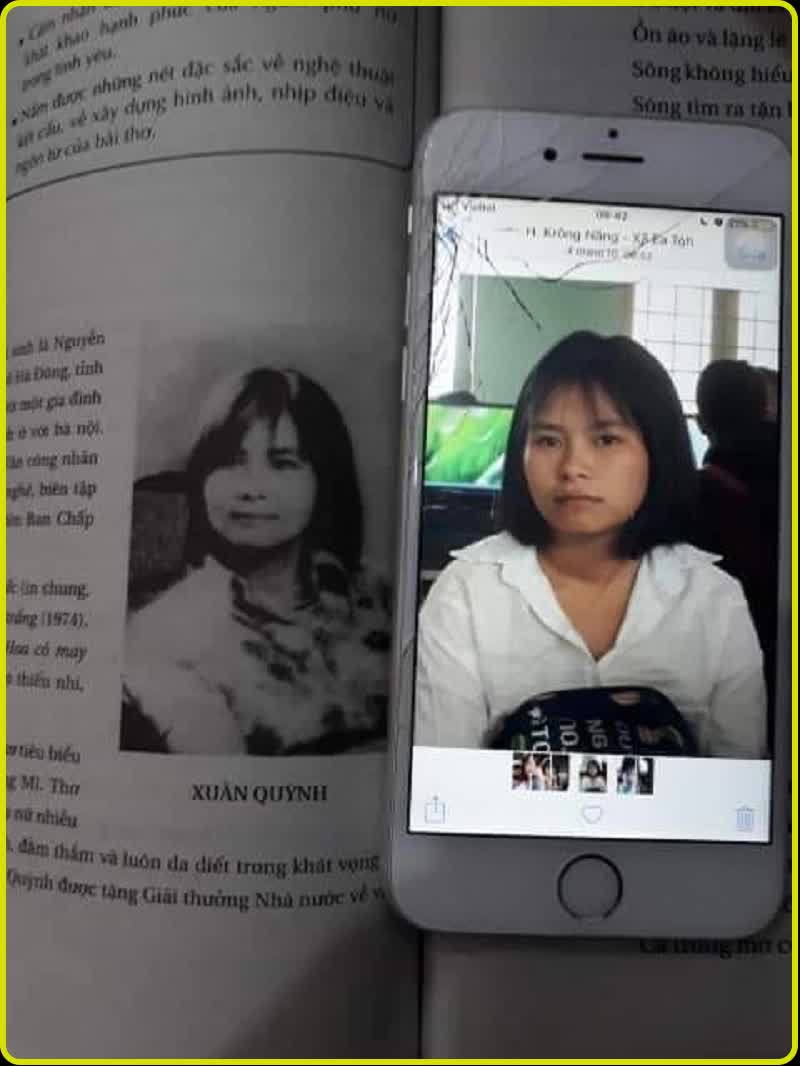
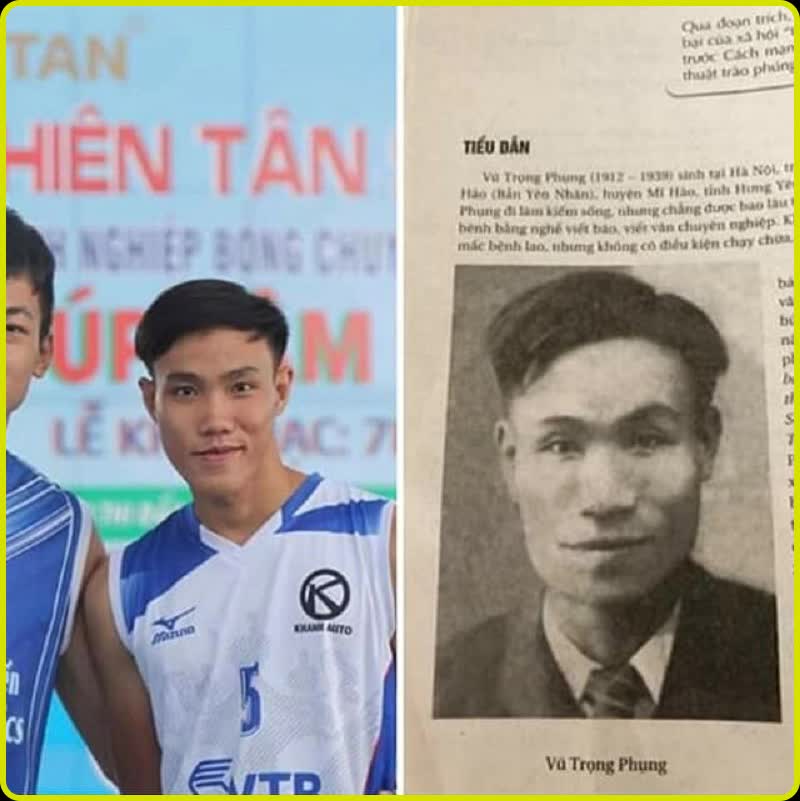
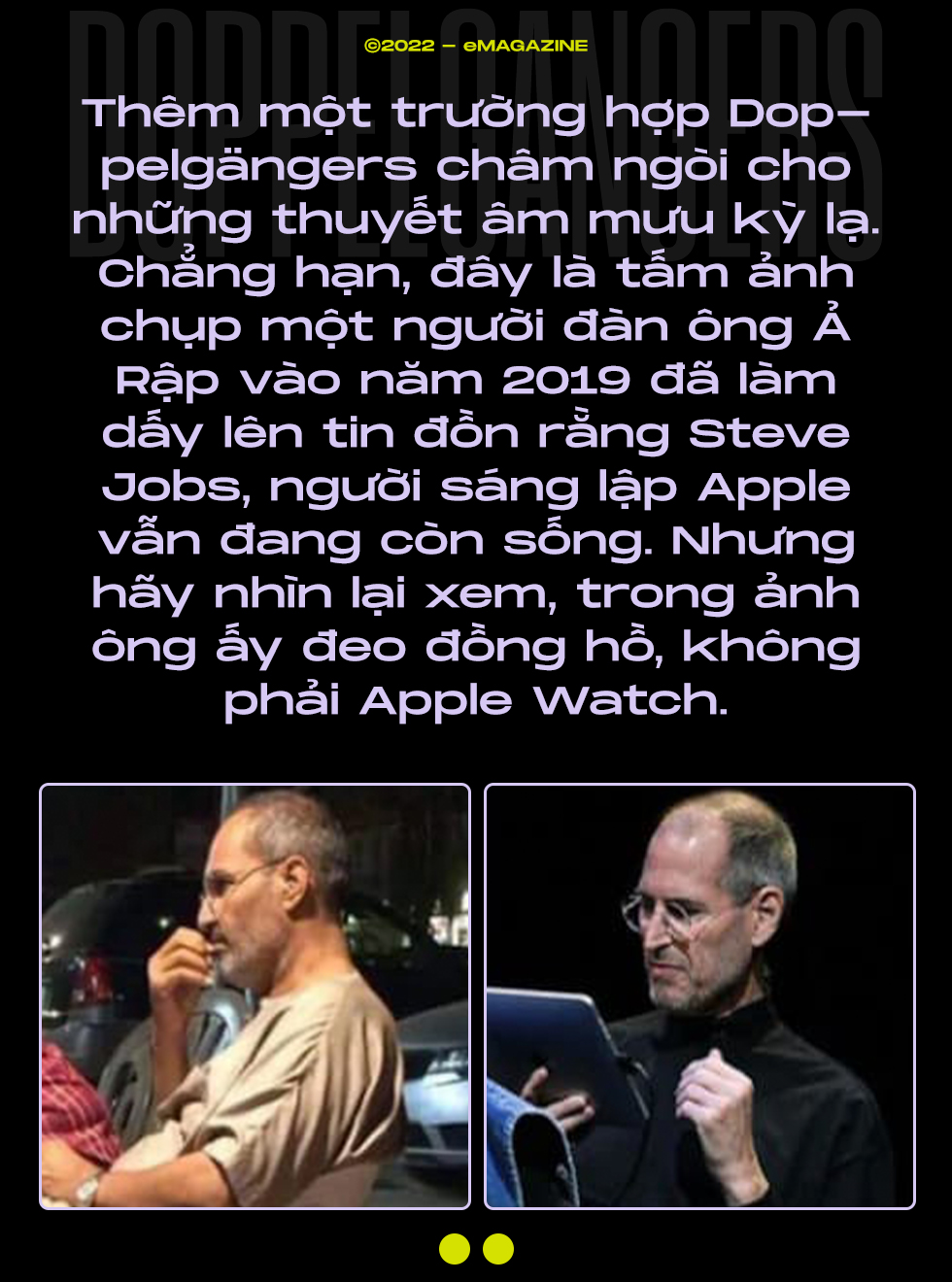

Now, back to the story of Santana Gutierrez, the American teenager who accidentally encountered her doppelgänger while walking in a shopping mall.
Unlike celebrities in the media, Santana’s case is more special, as she and her doppelgänger Isobel are both ordinary people. Both could have lived normal lives, separate and never meeting in real life.
Just imagine, if Barack Obama were not the President of the United States, what are the chances that he and his doppelgänger Ilham Anas could meet when one lives in America and the other in Indonesia?
And the same goes for other famous stars. They found their doppelgängers primarily because they are famous, and their faces appear frequently in the media.
By that logic, there are likely many more doppelgänger pairs in the world than we know. And they simply haven’t met because they are unaware of each other’s existence in real life.
Perhaps you also have your own doppelgänger, someone living somewhere in the world who possesses a face and physical characteristics similar to yours.
But if so, what are the chances that you will meet that person in real life?
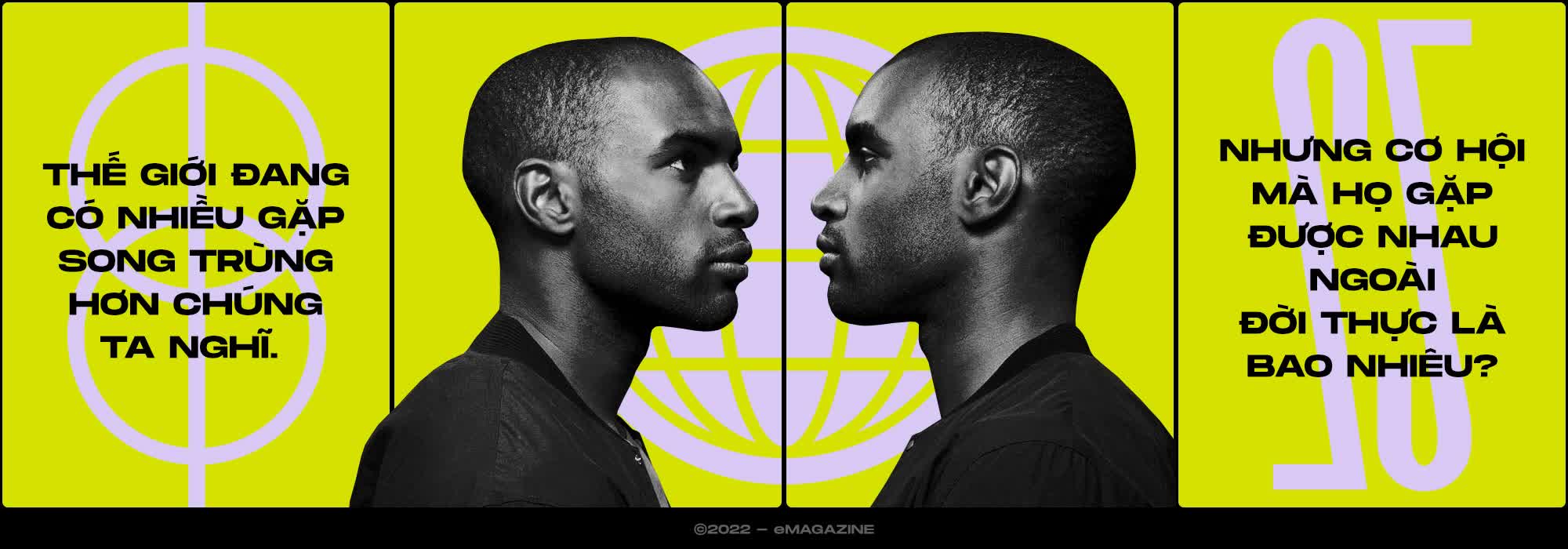
In 2015, a study published in the Journal of Forensic Sciences attempted to help us answer that question. The author team led by biologist Teghan Lucas from the University of Adelaide, Australia, examined 4,000 faces in the American Anthropometric Survey (ANSUR) database. This is a data record used by the U.S. military to track soldiers’ physical characteristics.
Lucas identified 8 facial identification features and calculated the probability of two people randomly matching all 8 of these features, unrelated by blood, to be 1 in 1 trillion (0.0000000001%).
You read that right, it’s an unimaginably small number. 1 in 1 trillion means that if the world always had 8 billion people, we would have to wait 125 generations, equivalent to about 2250 years, to find someone who is a doppelgänger.
Lucas’s calculations show us that mathematically, doppelgänger pairs could exist in real life. But it leads us to a concept known as the “Infinite Monkey Theorem.”
The theorem states: If you place a monkey in front of a computer keyboard with a word processor open, it will randomly press keys and produce random characters.
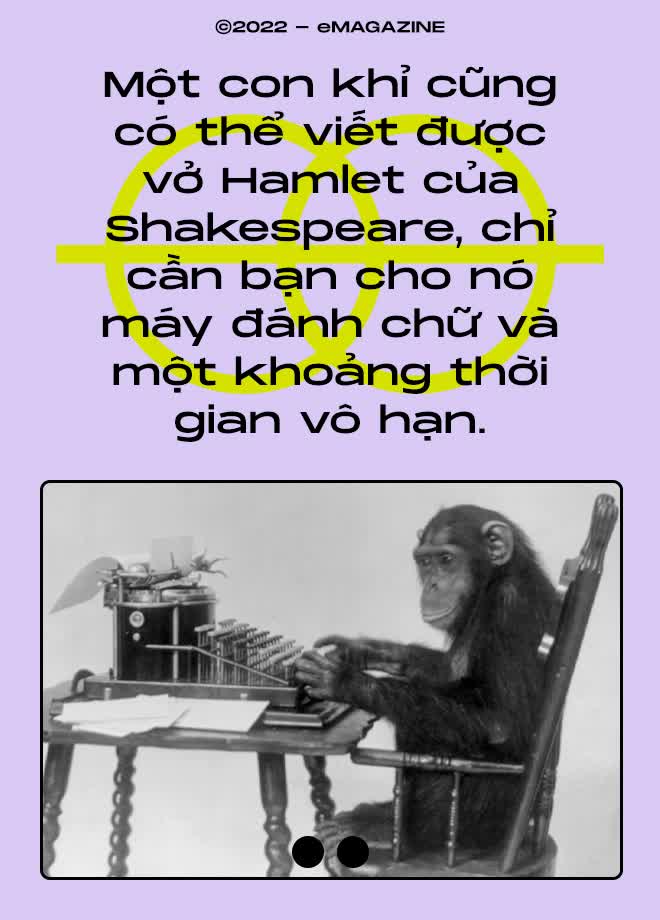
However, if you can keep the monkey immortal so that its typing process goes on indefinitely, surely at some point, the monkey will write a complete literary work of William Shakespeare.
Now, let’s simplify the problem a bit and calculate the probability that the monkey types the word “Banana.” If its keyboard has 50 keys and the keys are pressed randomly, the chance of the letter B appearing is 1/50. Then the probability of the letter “a” following it is also 1/50. And so on, the chance of the monkey typing the word “Banana” is (1/50)^15,625,000,000.
That number is less than 1 in 15 billion. But clearly, it still has a chance of happening, right? Now, let’s calculate the probability for Shakespeare’s Hamlet, which has 130,000 characters. Luckily, we don’t have to calculate it ourselves because scientists have done the math for us.
Their results indicate: For the monkey to have a 1 in 1 trillion chance of writing Hamlet, it would need to type continuously from the Big Bang until now, which is about 14 billion years, and would need to live continuously in 10^360,641 universes. In each universe since the Big Bang, a monkey only has a 1 in 1 trillion chance of typing 79 characters.
All this leads us back to the 1 in 1 trillion chance, where random genetic codes in your body somehow align with someone unrelated to you. Thus, these genes would express outwardly the 8 facial features identical to that doppelgänger.
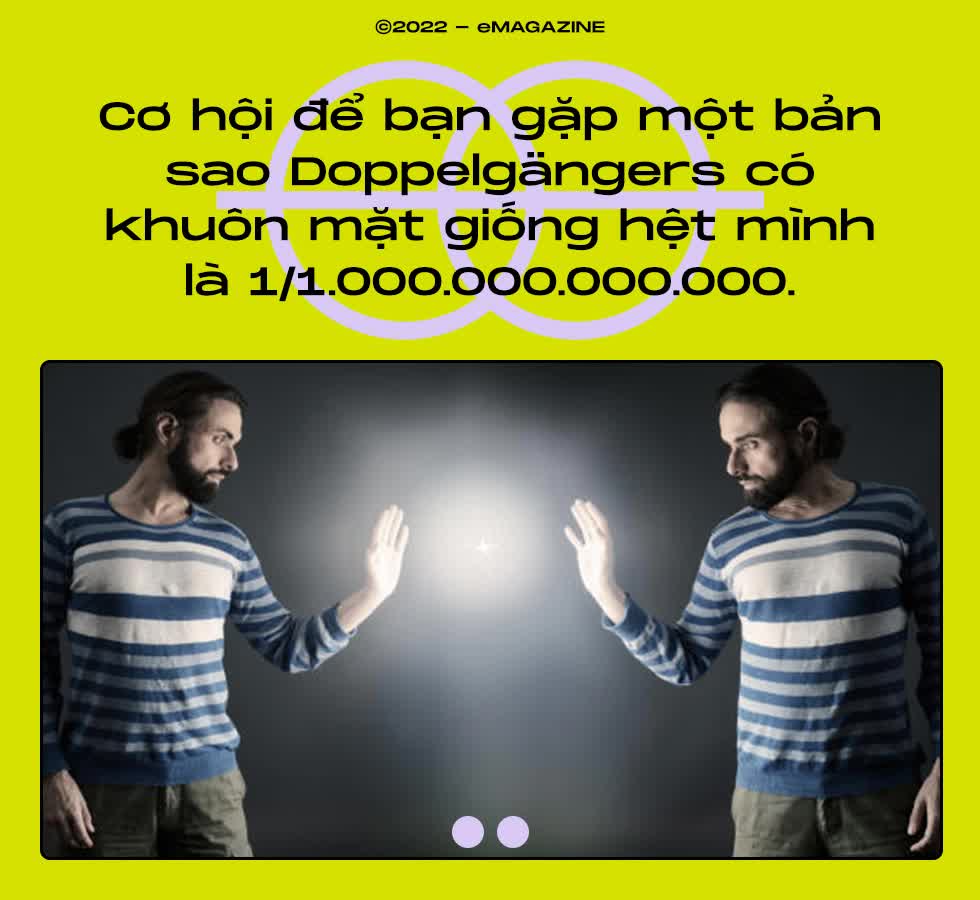
But if the study by scientists in the Journal of Forensic Sciences is correct, that we would have to wait at least 2250 years to find a doppelgänger identical to ourselves, then why did Santana meet Isobel, Taylor Swift have a lookalike on TikTok, and Ilham Anas – an unknown man from Indonesia – have the chance to travel the world thanks to his resemblance to his American president?

We continue to follow what happened in the second part of Teghan Lucas’s research. When she and her colleagues at the University of Adelaide ran a second experiment, they reduced the 8 matching facial features to a level just enough for faces to be relatively similar intuitively perceived by humans but not similar enough to confuse a facial recognition machine.
Strangely, the probability of any random person finding a doppelgänger living somewhere on Earth increased from 1 in 1 trillion to 1 in 135. And that is even the chance they could meet in their time.
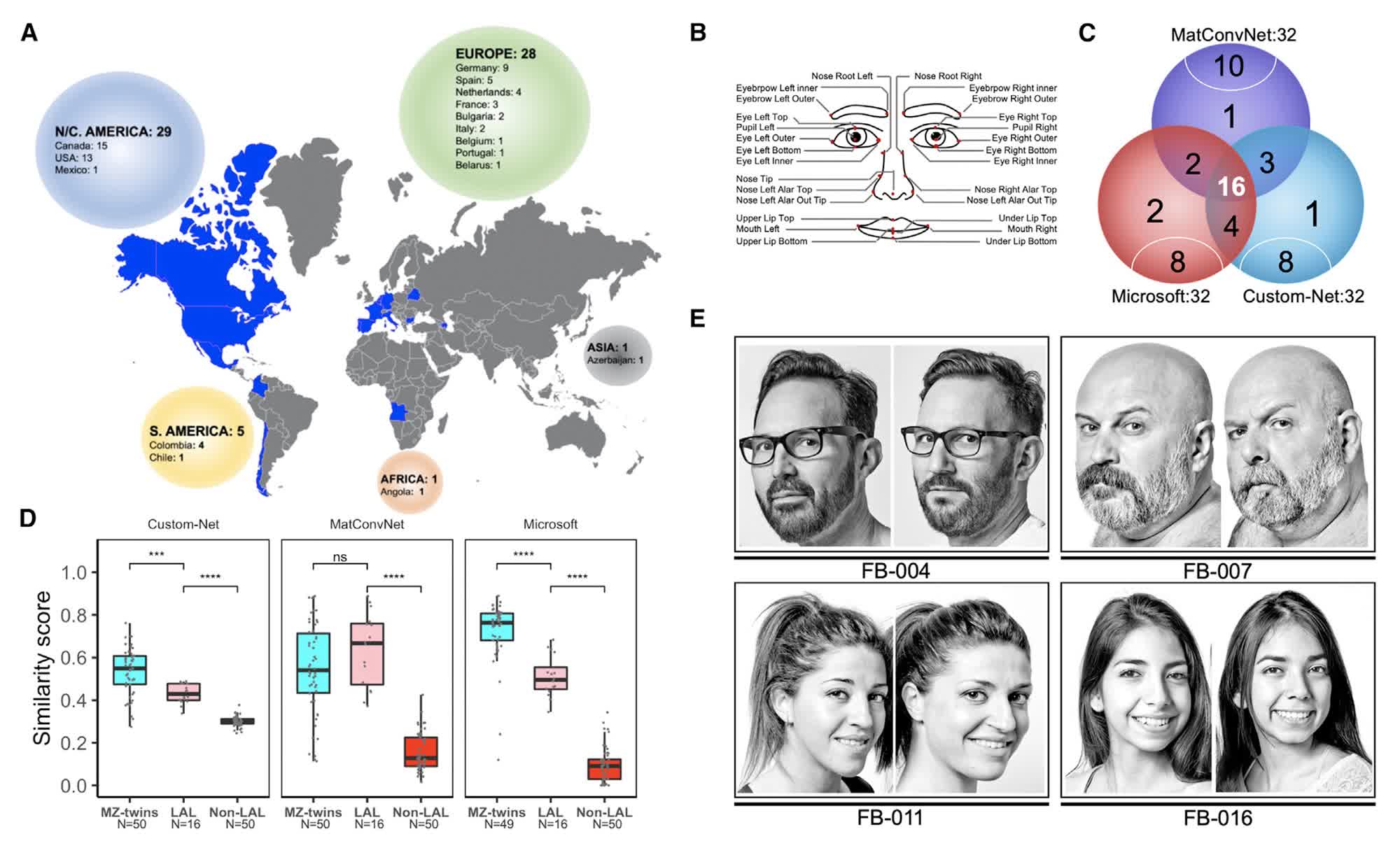
That number is equivalent to 0.7%, meaning if you are a college student and there are about 3,000 students at your school. The chance of meeting a copy of yourself during your college years would be 0.2%.
That number is not high enough, but it could explain the story of Santana Gutierrez meeting Isobel, her doppelgänger at a shopping mall in a city of over 3 million people in San Diego.
Thus, the explanation for the doppelgänger phenomenon is that our intuition can misidentify faces that are somewhat similar. To know where we went wrong, let’s compare the two images below:
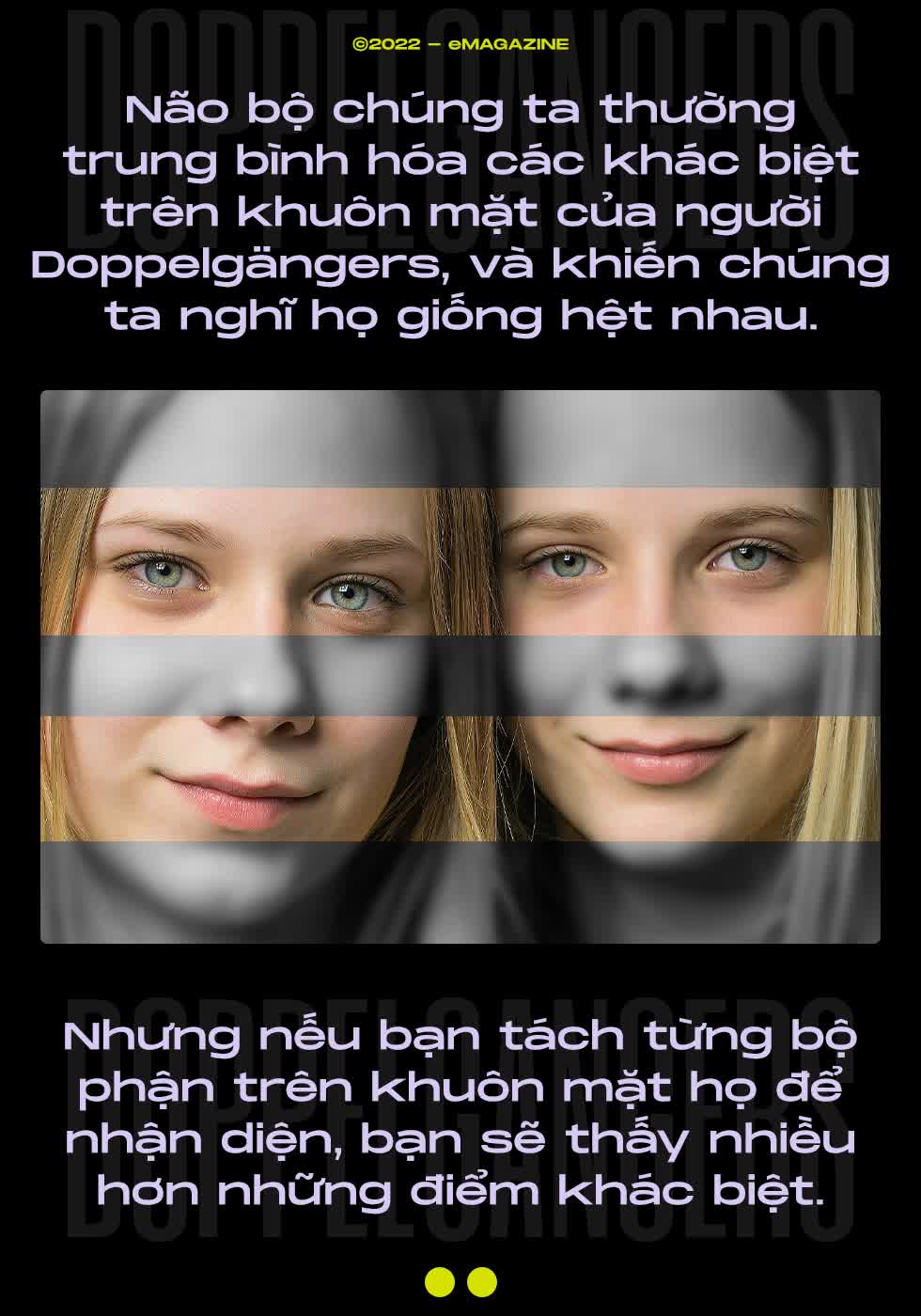
If only from the first image, you might think these two doppelgänger girls look exactly alike. But switching to the second image, when each feature on the face is analyzed independently, suddenly, we see they look a little less alike. It turns out the girl on the left has larger eyes while the girl on the right has thinner lips.
This happens because whenever we look at someone’s face, our vision scans the entire face holistically, in the order of features like hair, forehead, eyes, nose, mouth, chin…

When there are enough similar features, our brain is drawn to those characteristics. It automatically averages out the differences in the other features. This leads us to hastily conclude that the two faces of the doppelgängers are similar.
Facial recognition machines, on the other hand, are programmed to analyze and measure each feature like eyes, nose, and mouth separately. Thus, doppelgängers can deceive human intuition but not computers.
This is also why Face ID systems are still used in security, and forensic science still trusts in identifying the faces of criminal suspects.
Despite the existence of doppelgängers, scientists say that each of our faces still has a representation level equal to fingerprints and DNA. In fact, the faces of identical twins also differ, if they have different behaviors and lifestyles, such as one smoking while the other does not.
This has been explained through epigenetic mechanisms, stating that the human body is not only formed and determined by a set of genes but also by epigenetic factors, including environmental factors such as diet, diseases, and lifestyles that affect the regulation of DNA and turn on and off different genes.
In a pair of identical twins, if one smokes, the chemicals they absorb into their body will likely turn on some genes differently from the other twin. If this gene determines facial phenotype, they will have different appearances.
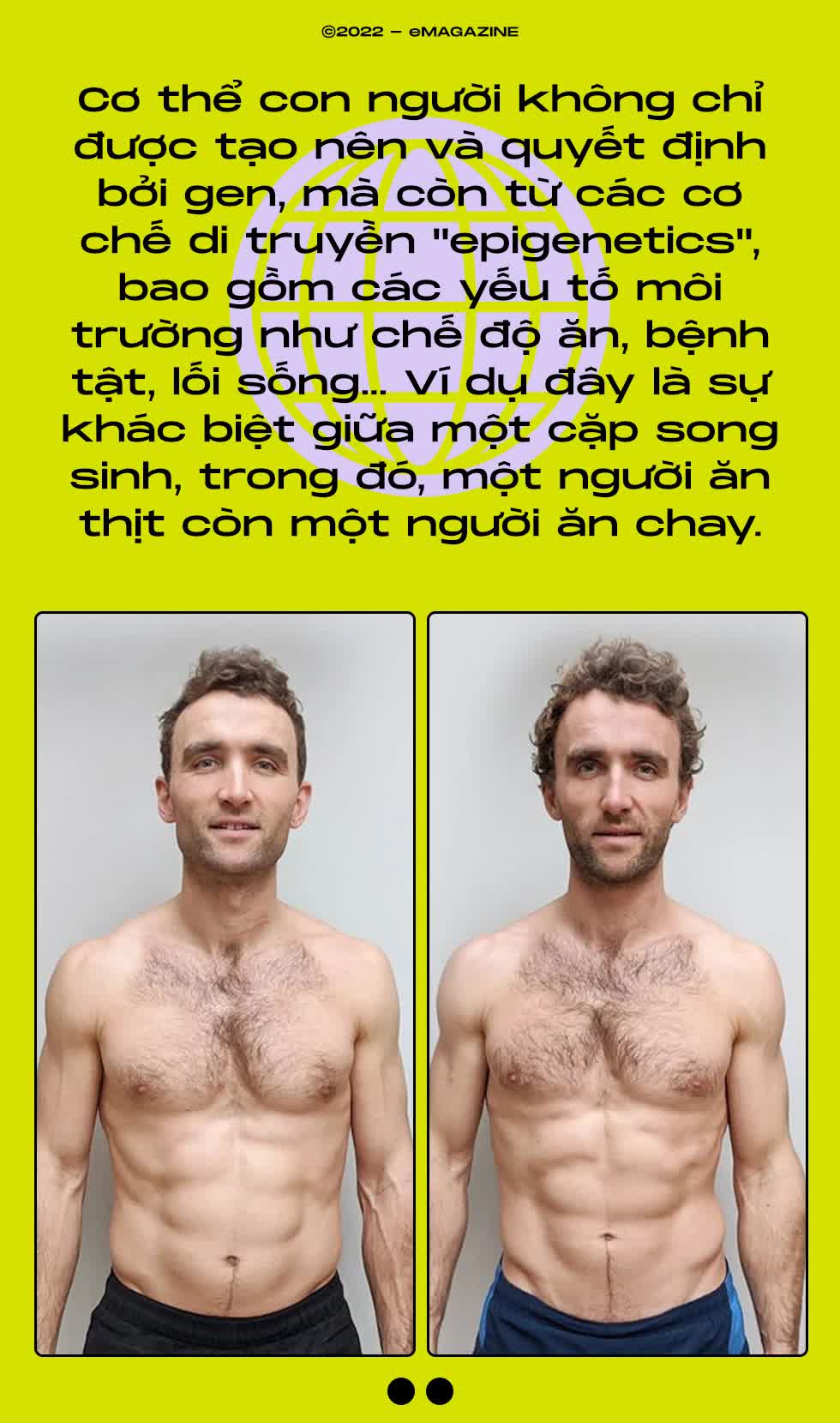
This is also true for doppelgänger pairs. In a recent study published in Cell Reports, scientists selected 32 pairs of doppelgängers to test their DNA and interview their lifestyles.
The results showed that 16 pairs of doppelgängers had more similar DNA than the remaining 16 pairs. These individuals also appeared more alike according to computer scoring.
However, among the 16 most similar pairs of doppelgängers, their lifestyles still differed leading to differences in gut microbiota. This is an important feature proving that the epigenetic profiles of these doppelgänger pairs are very different. And in reality, they are not 1:1 copies of each other.

In summary, the probability of encountering a perfect doppelgänger of yourself in real life is exceedingly small. It is 1 in 1 trillion times, equivalent to a monkey writing Shakespeare’s Hamlet in 10^360,641 universes.
But if you let your intuition decide, there will be about a 0.7% chance that there is indeed someone out there possessing a face and appearance somewhat similar to yours.
This is the doppelgänger, whom someone might tell you, “I just met someone who looks exactly like you the other day.” And that will also be the person who makes you freeze in a shopping mall when you accidentally catch a glimpse of them. The person who, when meeting someone else, could greet them by your name.
However, if you try to pull out your iPhone and have Face ID recognize your doppelgänger, it is almost certain that he or she will not be able to unlock your phone.
So, is the phenomenon of doppelgängers real or just a legend? That completely depends on the standards you set, based on measurements, numbers, or just intuition, which humans are easily misled by.
References: Atlasobscura, Nytimes, TheLocal, Sciencepeople, Smithsonianmag, Science, Forensic Science International, The Scientist, Medium, Insider, Scienceline, Theguardian